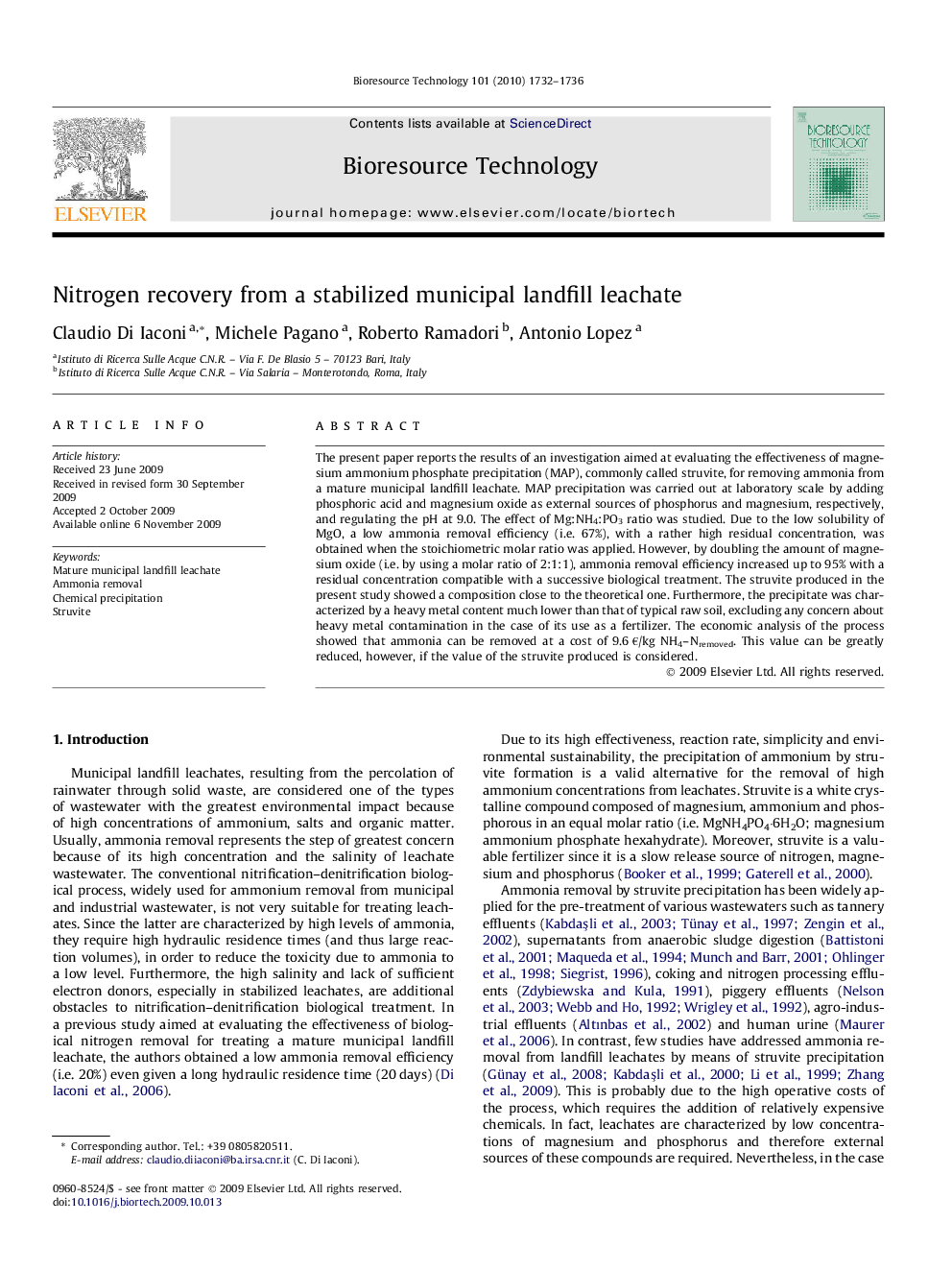| Article ID | Journal | Published Year | Pages | File Type |
|---|---|---|---|---|
| 682747 | Bioresource Technology | 2010 | 5 Pages |
The present paper reports the results of an investigation aimed at evaluating the effectiveness of magnesium ammonium phosphate precipitation (MAP), commonly called struvite, for removing ammonia from a mature municipal landfill leachate. MAP precipitation was carried out at laboratory scale by adding phosphoric acid and magnesium oxide as external sources of phosphorus and magnesium, respectively, and regulating the pH at 9.0. The effect of Mg:NH4:PO3 ratio was studied. Due to the low solubility of MgO, a low ammonia removal efficiency (i.e. 67%), with a rather high residual concentration, was obtained when the stoichiometric molar ratio was applied. However, by doubling the amount of magnesium oxide (i.e. by using a molar ratio of 2:1:1), ammonia removal efficiency increased up to 95% with a residual concentration compatible with a successive biological treatment. The struvite produced in the present study showed a composition close to the theoretical one. Furthermore, the precipitate was characterized by a heavy metal content much lower than that of typical raw soil, excluding any concern about heavy metal contamination in the case of its use as a fertilizer. The economic analysis of the process showed that ammonia can be removed at a cost of 9.6 €/kg NH4–Nremoved. This value can be greatly reduced, however, if the value of the struvite produced is considered.
